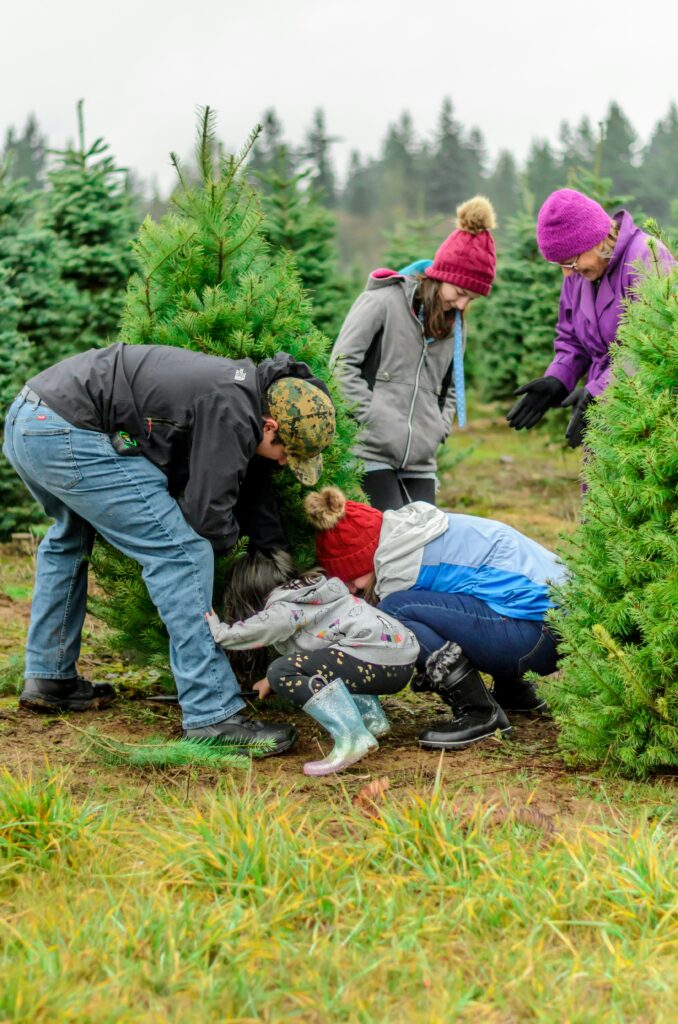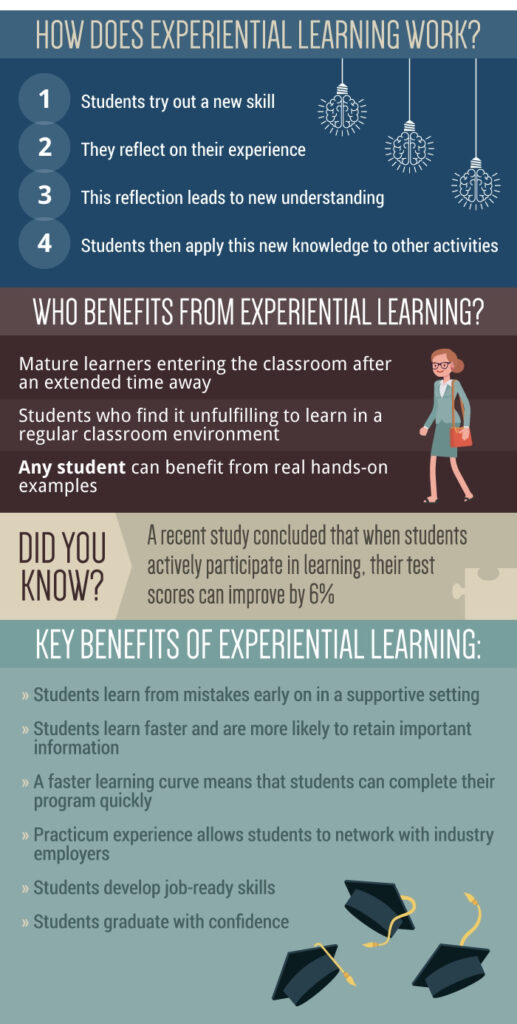Posts in Category: Blog Post #2
Post 2 – Experiential Learning
Experiential learning has been one of the most meaningful ways I have learned new skills. Unlike traditional instruction, which often involves memorization and passive learning, this applied approach allows me to actively engage, make mistakes, and truly understand concepts through practice. Rooted in constructivist principles, this approach encourages real-world application, self-reflection, and collaboration to help learners develop a deeper connection to their subject matter.
My Experience with Experiential Learning
One of the most memorable applied learning situations I’ve had was working as a barista. I wasn’t handed a textbook on customer service – I had to learn by doing. Making drinks, handling customer interactions, and problem-solving on the fly forced me to engage with the learning process actively. I made mistakes, received immediate feedback, and improved over time. This practical method reinforced my understanding of customer service far better than a traditional lecture would have.

If I were designing a learning environment for sustainability education, I would incorporate this approach by integrating hands-on community initiatives. Instead of just reading about climate change, students could participate in conservation efforts, analyze environmental impacts, and create sustainability initiatives, such as tree planting. This type of learning fosters critical thinking and a stronger engagement with the content – something I believe is essential for genuine understanding.
Insights from My Peers and Research
Darren Zhang’s post on experiential learning reinforced my belief that balancing real-world engagement with structured feedback is crucial for meaningful learning. Unlike direct instruction, which often provides immediate correction but limited application, experiential learning requires learners to take an active role in their development. Zhang’s insights highlight why structured feedback is particularly vital in this context—without it, the hands-on experience may lack direction or lead to reinforcement of incorrect assumptions.
Neuroscientific research supports this idea as well. Sorenson-Unruh (2019) explains that active engagement helps strengthen neural connections, which improves long-term memory retention. This aligns with my own experiences – learning by doing has always helped me remember and apply knowledge more effectively.
Yangtao Kong’s research (2021) also reinforces my perspective. He emphasizes how practical application in education boosts motivation and classroom engagement. I completely agree – when I feel that my learning has real-world relevance, I’m much more invested in the process. Language learning, driving practice, and this class are great examples of the constructivist approach to learning I have witnessed in my own life that are useful for real-world scenarios.
Why Experiential Learning Matters
Experiential learning isn’t just about gaining knowledge – it’s about understanding concepts in a way that sticks. Compared to traditional teaching methods, which focus on passive absorption of information, this interactive method requires learners to engage, reflect, and adjust their thinking based on experience. This makes learning more meaningful and applicable.
Incorporating experiential learning into instructional design can create richer, more engaging learning environments. Whether it’s in a classroom, a workplace, or a personal learning journey, real-world practice fosters deeper comprehension and long-term retention. For me, learning through practice has been the most effective way to develop practical skills, and I believe it should be integrated into more educational settings.

Zhang, D. (2025). Post 2: Experiential Learning [Blog post]. https://maweika.opened.ca/2025/02/
Sorenson-Unruh, C. (2019). Reflective Teaching Evolution: Learning – The Neuroscience and the Neuromyths. https://clarissasorensenunruh.com/2019/04/20/5r-adult-learning-assignment-learning-the-neuroscience-and-the-neuromyths/
Wighton, D. J. (1991). Simulation debriefing: applying Kolb’s model of experiential learning to improve classroom practices. https://dspace.library.uvic.ca/items/4f3aa288-0ef4-4a0a-b296-d46484d2b73a
Kong, Y. (2021). The Role of Experiential Learning on Students’ Motivation and Classroom Engagement. Frontiers in Psychology, 12, 771272–771272. https://doi.org/10.3389/fpsyg.2021.771272

Recent Comments